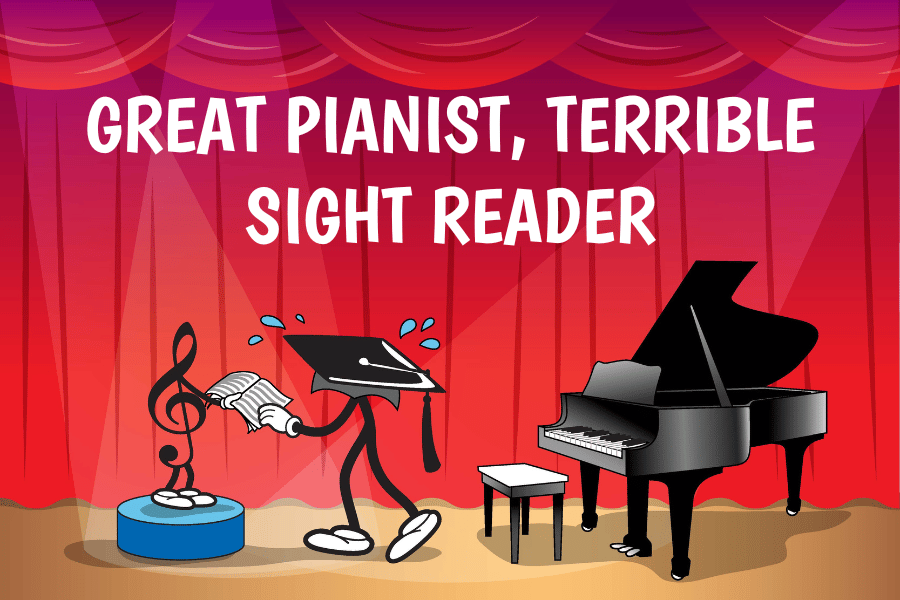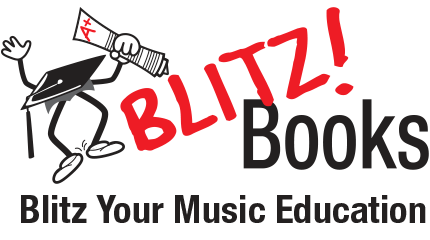Great Pianist, Terrible Sight Reader

I have met many amazing pianists who are [self-confessed] woeful sight readers.
However, I have never once come across a terrific sight reader who is a woeful pianist.
Why is this so?
Difference in time spent
Someone who is regarded as a great pianist usually excels when playing in front of others, whether in a large recital hall or a small room with a sole examiner as the audience. They will have spent many hours a day practising their repertoire way beyond the point of accuracy; pieces are often memorised and internalised so that, in performance, they will hold up under pressure.
Someone who is regarded as a great sight-reader has also spent many hours at the piano, so they are proficient pianists, however they have spent their time differently. Perhaps they accompany instrumentalists, perhaps they play for church; for whatever reason, they are constantly required to read different music and have therefore become experts in the fast and fluent translation of symbol to sound.
Two separate skills
Great pianists spend the majority of their time at the piano rehearsing the same music 1, whereas great sight readers spend the majority of their time at the piano reading different music.
Rehearsing a difficult piece over and over until it is ready for performance is a skill of mastery. There is so much fine motor control required, so much choreography of the hands to rehearse, that it would be impractical to spare any brain energy for reading 2. This is why pieces are often memorised. But even if the piece is not memorised, the music on the stand is nothing more than a visual prompt. It is not being ‘read’; that decoding happened long ago 3.
End the frustration
I have witnessed many scenarios, in my own studio and in my those of my colleagues, in which parents are confused as to why their Grade-8-exam-standard child can’t seem to read music very well. This can lead to poor exam results and huge frustration.
As discussed in a previous blog: it is important to teach students and parents that sight reading and virtuoso performing are two completely different skill sets. Spending months practising and perfecting a Chopin nocturne is a wonderful achievement, however this is not a reading skill. Sight reading is a separate skill that needs to be practised separately.
How can you practice sight reading?
Ask anyone who is a good sight reader how they came to be so. They will tell you: because they do it ALL THE TIME. No-one is ‘born’ a good sight reader; we need to learn to read music just like any language.
Kindergarten students start off with short little books called ‘readers’, which they read once or twice and then move on. They don’t spend time repeating and articulating the phrases of the little book, or memorising the text, because that’s not the point – they just need lots of experience reading text.
The equivalent scenario for pianists (or any instrumentalist!) would be to play short, easy pieces which are highly patterned, and then instead of trying to perfect and master and memorise it, simply move on to the next short piece.
So, ‘practising’ sight reading means constantly finding new music to read. The more we do it, the faster we get at transferring what we see on the page into actual sound.
Break down the elements
There are many factors involved in successful sight reading:
· Rhythm reading
· Random note reading
· Melodic pattern reading
· Chord reading
· Melody playing (rhythm and pitch combined)
· Fingering
· Reading in two clefs/coordinating two hands
· Observing dynamics/articulation/expression
· Playing under pressure (because it’s most often tested in an exam!)
To lay the foundations of solid sight reading, each of these concepts must be presented separately, and then gradually combined. This is exactly the approach of the Blitz Sight Reading Series. The books break down the elements of sight reading so that students really understand what they are seeing on the page.
Help reading by using rote teaching
If you had asked me ten years ago whether rote helps reading, I would have said no way. But it DOES! Rote teaching, used in the right way, is a fantastic tool to help reading.
Being taught a certain bar or short phrase by rote helps to set up the student’s hand position and aural recognition, and from there the student can easily find and play the like patterns in the score. This is an essential component of learning to read, and this is the philosophy behind my Rote Repertoire series.
I have composed more than a hundred pieces which help students to sight read fluently, because they are broken down into three levels. You can read more about this here, and if you’d like to see Rote Repertoire in action, you can watch the most recent webinar replay here.
Conclusion
As teachers, we would never discourage students from the idea that they can become a good/great/amazing pianist. We know how to guide them and how to make them understand the importance of practice.
It is no different for the skill of sight reading. With the right resources, practising sight reading is fun and satisfying. As long as practice time is devoted to this essential skill, anyone can become a good sight reader.
And even more importantly: once sight reading becomes easy, this gives us access to music for life.
P.S. Upcoming sight reading webinar
Want to know more? I’m running a free webinar on how to create ‘expert’ sight readers. Join me on May 12 – you can register here.
- Usually a select few pieces, for months at a time.
- Sight reading involves a lot of brain function. Studies like this one have shown that sight-reading music notation activates many more brain areas than reading text alone.
- In fact, I have witnessed many students who have ‘memory lapses’ even though the music is there in front of them.

This is so true! You articulate this so well. Thank you.